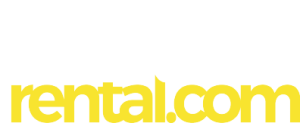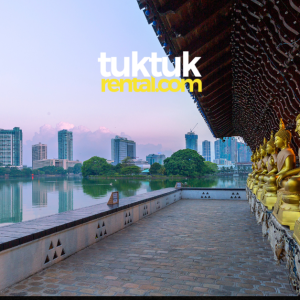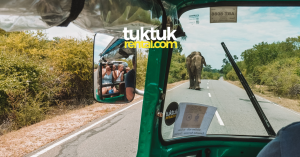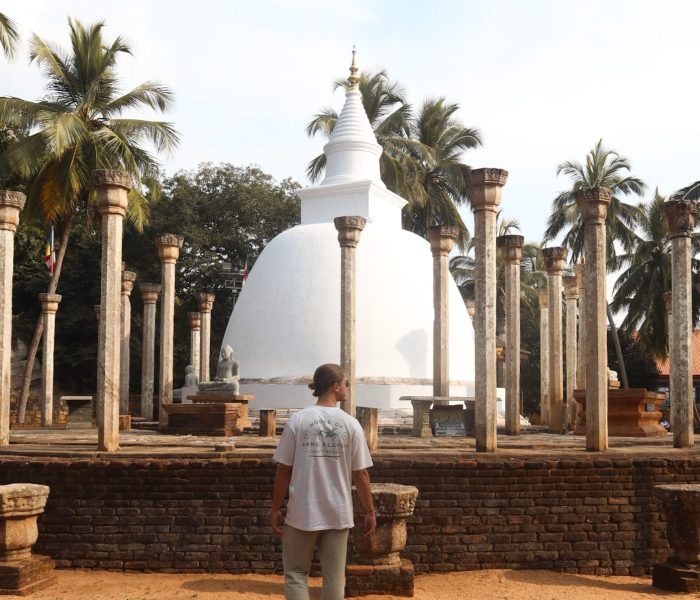
Sri Lanka is the “Pearl of the Indian Ocean,” but it’s more than just a tropical escape. For instance, beneath its lush jungles and golden beaches lies a rich spiritual heritage. This heritage, in fact, pulses through ancient temples and sacred sites. Sri Lanka’s sacred architecture offers a deep dive into the island’s multicultural identity. Here, you can find cliffside Buddhist caves, vibrant Hindu kovils, and peaceful mosques with stunning views.
Are you a history buff or a culture seeker? Or do you simply find peace in sacred spaces? If so, these temples in Sri Lanka offer a deep connection beyond the beaches and tea fields. So slip off your shoes, dress modestly, and step into the spiritual heart of the island.
The Cultural Triangle’s Unmissable Sanctuaries
Temple of the Sacred Tooth Relic, Kandy
No temple adventure in Sri Lanka is complete without visiting Sri Dalada Maligawa. This is the famous Temple of the Sacred Tooth Relic in Kandy. Indeed, the iconic Buddhist temple and UNESCO World Heritage Site is the spiritual epicentre of Sri Lanka. It houses what people believe is a tooth relic of the Buddha himself. The relic arrived in Sri Lanka in the 4th century CE, which makes this one of the most venerated Theravāda sites. A golden casket enshrines the relic, which rests within a heavily guarded inner sanctum. However, pilgrims can see it only during ceremonial times.
More than just a relic, the temple itself is also a work of art. For example, it features intricately carved wooden pillars, gold-plated ceilings, and lotus-studded courtyards. The traditional Kandyan architecture makes the temple feel both regal and sacred. The best time to visit is during Esala Perahera. This grand procession, for instance, features fire dancers, decorated elephants, and drummers celebrating the tooth relic.
The temple complex also includes museums, shrines, and beautiful gardens. Consequently, these offer a full day of immersion into Sri Lanka’s Buddhist heritage. The sounds of chanting monks and the smell of jasmine and incense will certainly stay with you long after you leave.
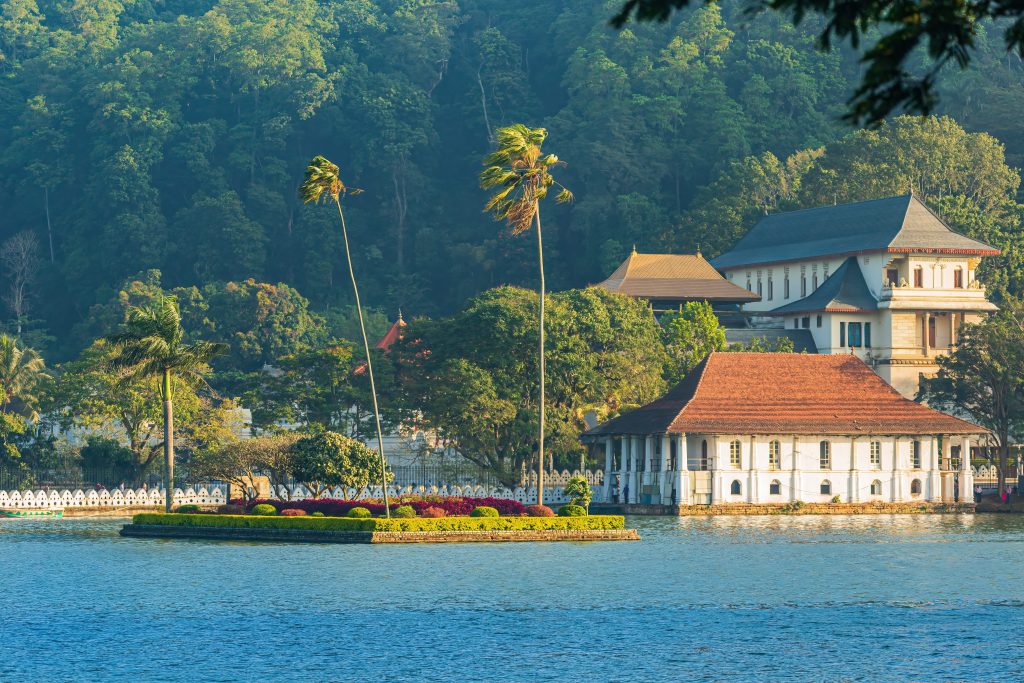
Dambulla Cave Temple, Dambulla
The Dambulla Cave Temple sits 160 meters above the surrounding plains. This temple, also known as the Golden Temple of Dambulla, rests atop a rocky outcrop in Sri Lanka’s cultural triangle. It is a striking blend of natural and man-made marvels. Furthermore, it is also one of Sri Lanka’s most extraordinary religious and artistic achievements.
The site dates back to the 1st century BCE. Specifically, King Valagamba of Anuradhapura sought refuge here during a South Indian invasion. After regaining his throne, he transformed the caves into a magnificent rock temple. He did this to honor the monks who sheltered him. Now a UNESCO World Heritage Site, the temple has five main caves. They contain over 150 Buddha statues, some more than 14 meters long. In fact, each cave tells a story of kings, devotion, and a long monastic tradition.
Elaborate frescoes cover the ceilings and walls. They depict scenes from the Buddha’s life and the history of Sinhalese Buddhism. These paintings are more than 2,000 years old. Artisans have meticulously preserved them, therefore offering a vivid look into Sri Lanka’s artistic traditions.
Reaching the cave requires a bit of a climb. However, the path has monkeys, flowering trees, and a cool breeze, making the journey feel meditative. At the top, the serenity is palpable. For instance, cool air flows through the caves and soft light illuminates ancient stone carvings, creating a deeply spiritual atmosphere.
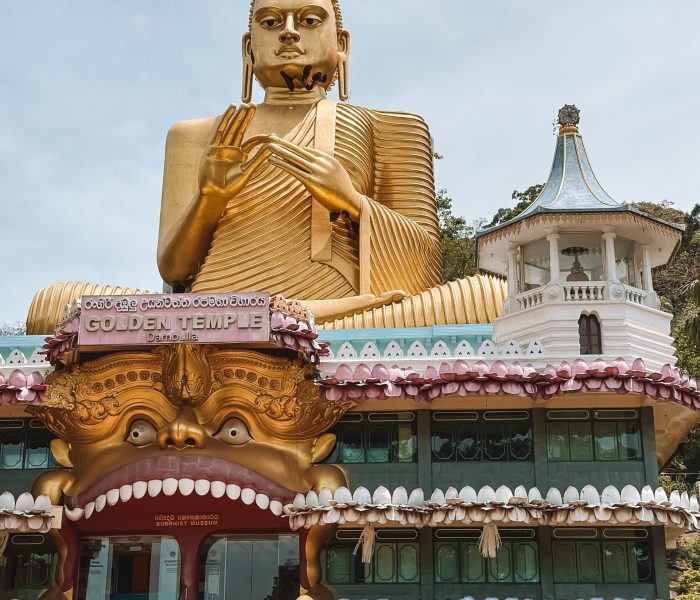
Vibrant Hindu Kovils and Inclusive Sanctuaries
Kataragama Temple, Kataragama
Few places in Sri Lanka are as spiritually inclusive as Kataragama. In fact, Buddhists, Hindus, Muslims, and the indigenous Vedda people revere this temple complex. Located in the southern jungles, Kataragama is a melting pot of faiths and traditions. Indeed, it is a living symbol of religious harmony.
The central shrine honors Skanda (Murugan), the Hindu god of war. In addition, Buddhists also venerate him as Kataragama Deviyo, a guardian deity. According to folklore, Murugan married the Vedda princess Valli here, adding to the temple’s local significance.
You will also find Buddhist stupas, Islamic tombs, and shrines throughout the grounds. The temple, for example, comes alive during the annual Esala Festival. During this time, thousands of devotees walk barefoot for days, perform acts of penance, and walk on fire. Even outside festival time, Kataragama pulses with spiritual energy. Pilgrims chant, light oil lamps, and offer fruit baskets to the gods. In conclusion, it is not just a temple; it is a sacred journey that transcends doctrine.

Nallur Kandaswamy Kovil, Jaffna
The Nallur Kandaswamy Kovil sits in the heart of Jaffna. It is one of the most important Hindu temples in Sri Lanka and a vibrant symbol of Tamil Hindu culture. The temple honors Lord Murugan. Furthermore, it is famous for its towering gopuram (ornate gateway tower), bright orange walls, and daily rituals.
The original temple dates back to the 10th century. However, colonial invasions and conflicts led to its destruction and rebuilding several times. The current structure, from the 18th century, is a vibrant expression of Dravidian architecture. Despite its history, the temple remains a proud emblem of resilience. As a result, the temple is most magical during the Nallur Festival in August. Over 25 days, thousands gather for religious processions, music, and dance. It is truly a sensory feast of color, sound, and faith.
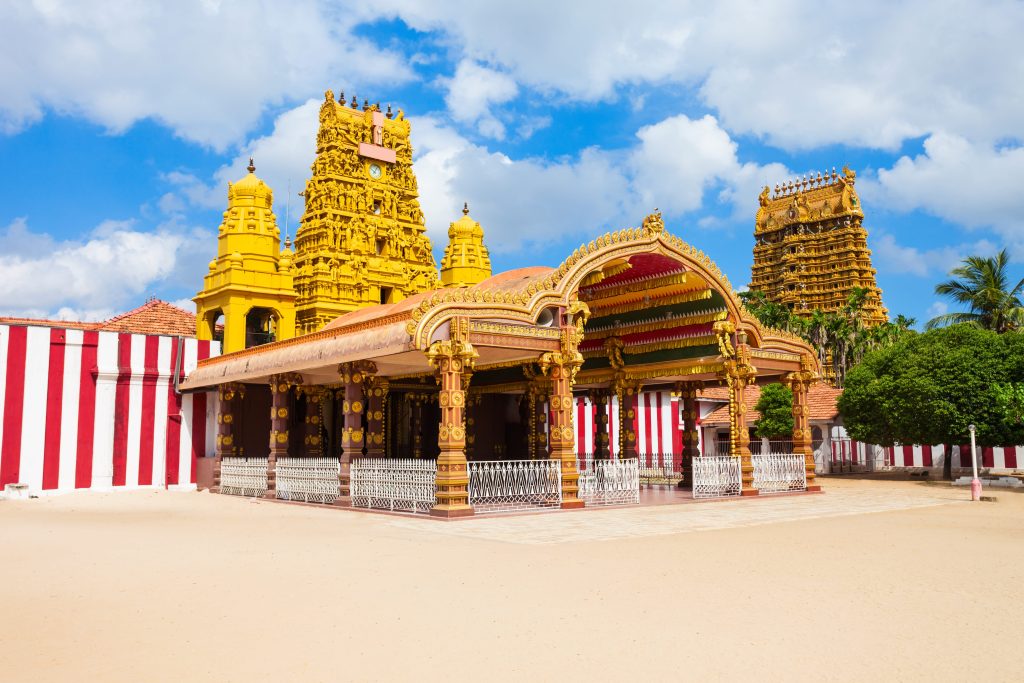
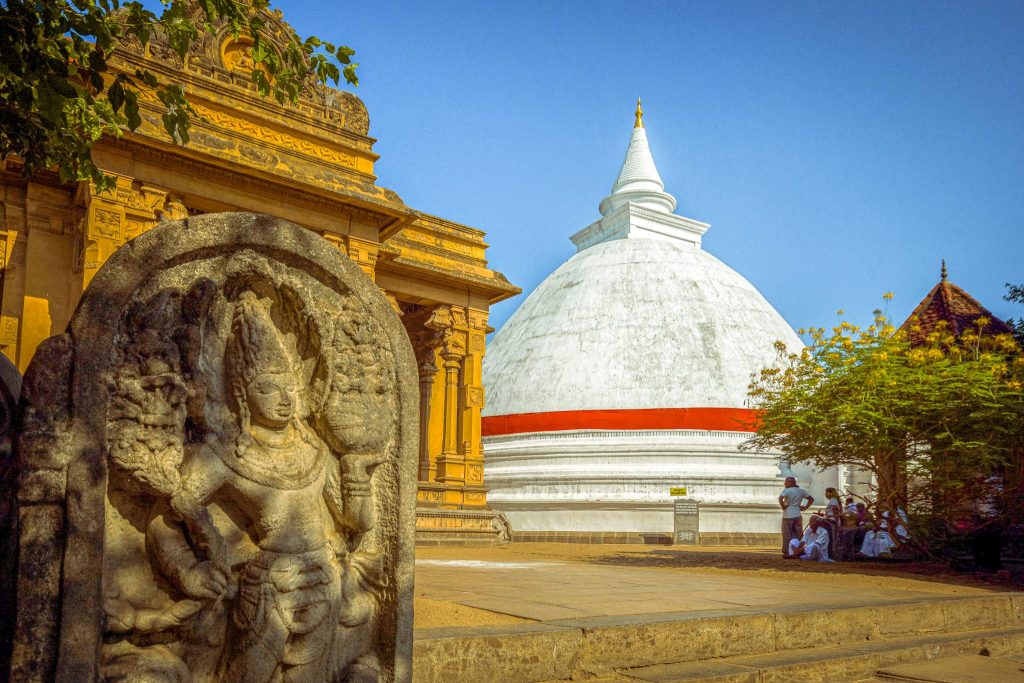
Koneswaram Temple, Trincomalee
Koneswaram Temple in Trincomalee is perched on the dramatic Swami Rock cliff. Overlooking the Indian Ocean, it is as breathtaking as it is sacred. People also call it the “Temple of a Thousand Pillars.” Koneswaram honors Lord Shiva. In fact, it is one of the five ancient Pancha Ishwarams, which are sacred Shaivite temples along the coast.
Legend says Ravana, the mythical king from the Ramayana, once worshipped here. Furthermore, historical records point to its existence as early as the 3rd century BCE. However, Portuguese colonizers destroyed the original structure in the 17th century. Devotees later rebuilt the temple in the 20th century, yet you can still see relics and foundations of the old shrine nearby. The sweeping ocean views truly make Koneswaram stand out. As you walk up, the ocean flanks one side and lush greenery the other. You can also combine a visit here with a stop at Lover’s Leap cliff, a popular photo spot.
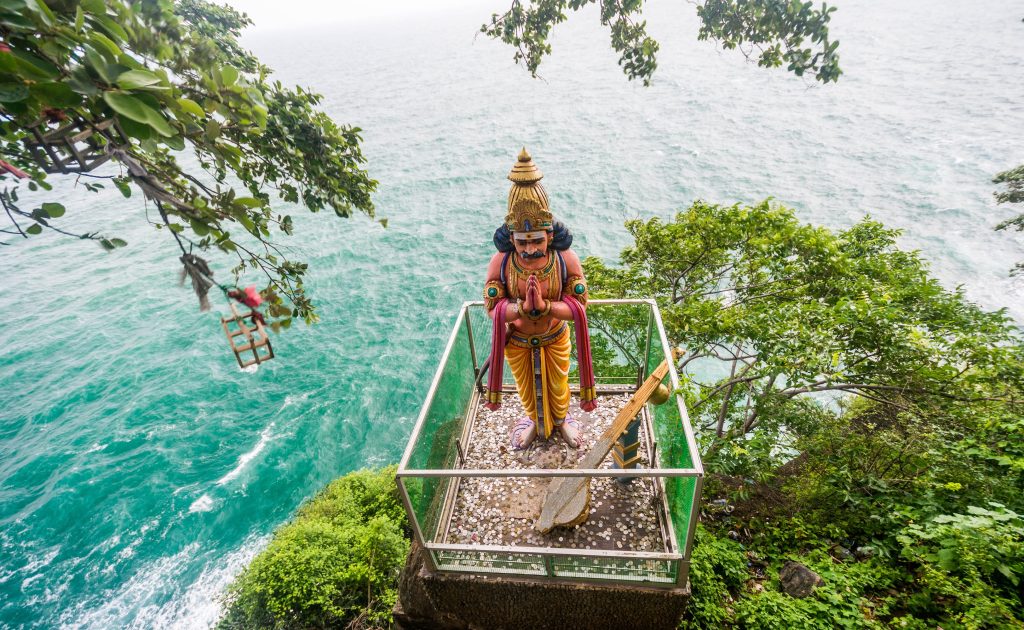
Historical Monasteries and Urban Temples
Tissamaharama Raja Maha Vihara, Tissamaharama
This ancient monastic site is in the southern town of Tissamaharama. It dates back to the 3rd century BCE and was once a major center for Buddhist scholarship. In fact, people believe King Kavan Tissa of Ruhuna established the temple. It is one of four major Buddhist monasteries founded in Sri Lanka after Arhant Mahinda Thera introduced Buddhism.
The temple’s most striking feature is its massive stupa. Specifically, it rises to 156 feet with a circumference of 550 feet, making it the largest in the south. According to chronicles, builders constructed the stupa to enshrine sacred relics, including the frontal bone relic of the Buddha. Because of its location, Tissamaharama is an ideal spiritual stopover if you are heading to Yala National Park.

Aluvihara Rock Temple, Matale
Nestled in the central hills near Matale, the Aluvihare Rock Temple is a historically significant Buddhist site. However, it often flies under the radar. Its pivotal role in preserving Buddhist teachings makes it exceptional. For instance, in the 1st century BCE, monks first wrote down the Buddha’s oral teachings here. They did this during a time of famine and unrest, consequently giving birth to the Pali Canon, the cornerstone of Theravāda Buddhism.
A steep climb takes you to natural caves that people transformed into shrines. Inside, there are vivid paintings and reclining Buddha statues. Some caves also contain ancient inscriptions and palm-leaf manuscripts. Overall, the temple has a raw, authentic feel. If you are traveling between Kandy and Dambulla, this temple makes a worthwhile stop.
Colombo and Its Surroundings: A Blend of Old and New
Kelaniya Raja Maha Vihara, Kelaniya
Just a short 10-kilometre drive from Colombo lies Kelaniya Raja Maha Vihara. This temple has deep roots in Buddhist mythology. In fact, legend says the Buddha himself visited Kelaniya over 2,500 years ago. This makes it one of the island’s most sacred sites.
The current temple was built in the 20th century, but its origins trace back to the 3rd century BCE. Indeed, the temple is famous for its massive stupa. People believe it enshrines a throne gifted to the Buddha. Surrounding it is a vast prayer hall with vivid murals by the artist Solias Mendis. These, for instance, illustrate episodes from the Buddha’s life and Sri Lanka’s Buddhist heritage. Despite its proximity to the capital, Kelaniya retains a peaceful charm. Moreover, the temple grounds are spacious, with bodhi trees and lotus ponds offering quiet corners for reflection.
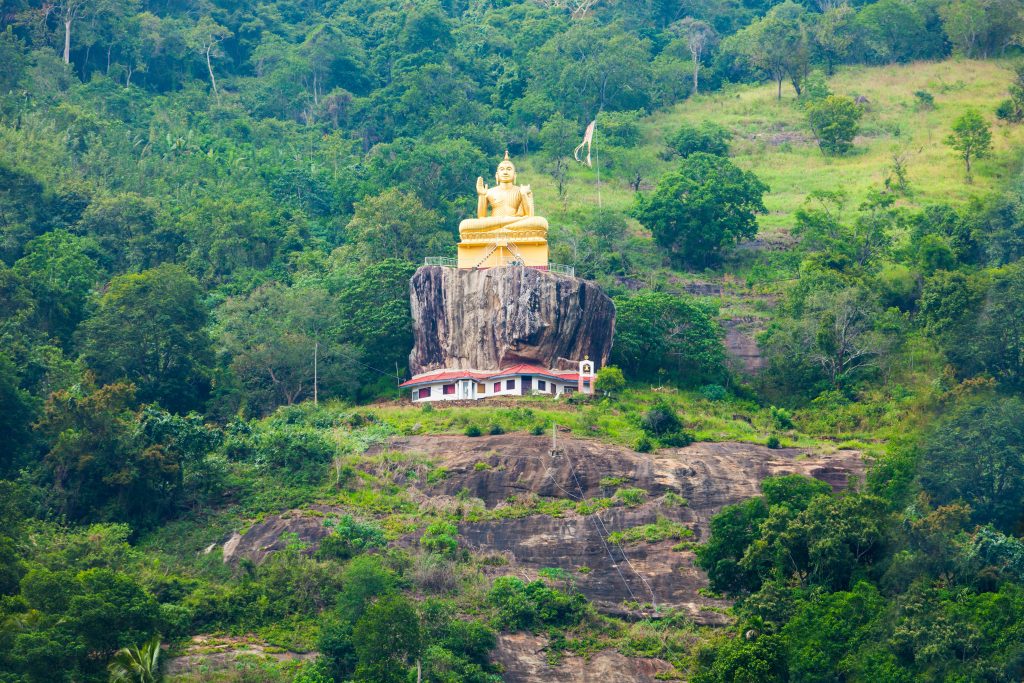
Dawatagaha Mosque, Colombo
Breaking the mold of temple tours, the Dawatagaha Jumma Masjid is one of Colombo’s most significant Islamic sites. Located in Cinnamon Gardens, this white-domed mosque houses the tomb of a revered Sufi saint, Seyedina Shaikh Usman Waliyullah.
Legend surrounds the mosque’s origins. For example, in 1820, a woman selling oil tripped in the cinnamon jungle and broke her pot. In her despair, a venerable figure appeared and miraculously replenished her oil. This event ultimately led to recognizing the saint’s resting place and establishing the mosque. A visit here offers a poignant glimpse into the city’s harmonious blend of history, faith, and community.
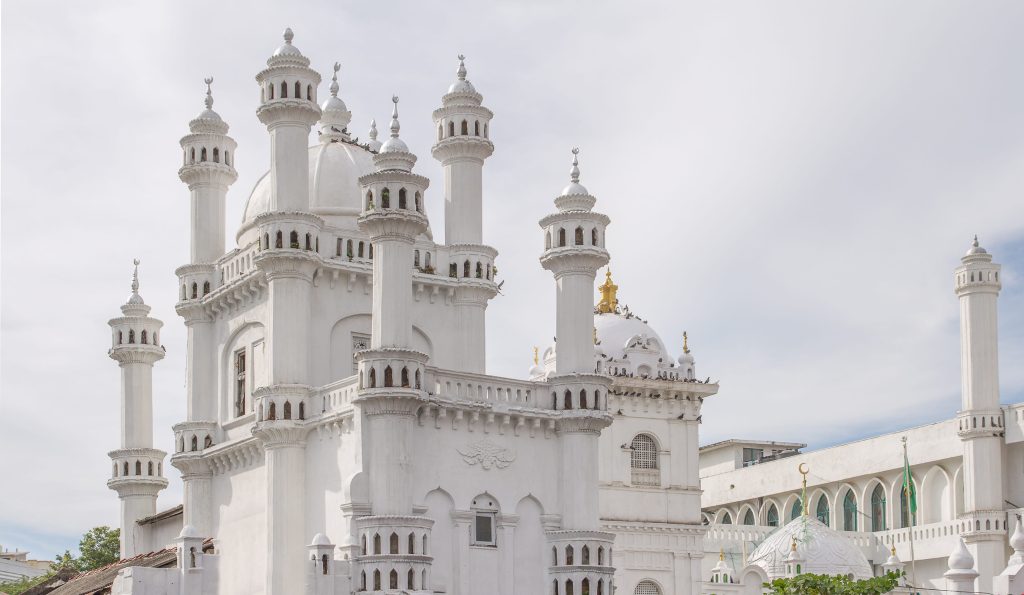
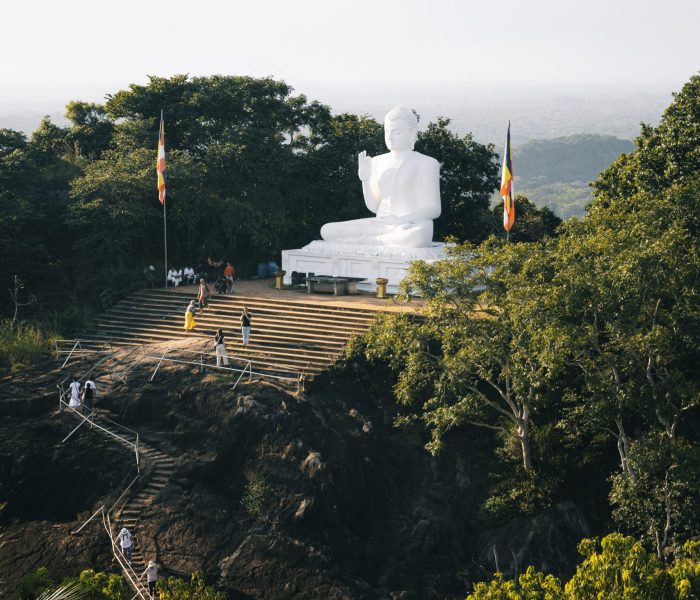
Gangaramaya Temple, Colombo
In the heart of bustling Colombo, Gangaramaya Temple is a fascinating blend of tradition and modernity. This eclectic temple complex near Beira Lake is a place of worship, but also a museum, a library, and a cultural center.
Founded in the late 19th century, Gangaramaya is unique in style and function. Architecturally, for instance, it mixes Sri Lankan, Thai, Indian, and Chinese influences. You will find towering Buddha statues alongside vintage cars and ancient relics. Indeed, the contrast between the sacred and the worldly gives this place a distinct personality. Gangaramaya is also the epicentre of Colombo’s grandest religious celebration, the Navam Perahera, held every February.

Frequently Asked Questions
The eight sacred places in Sri Lanka, known as the Atamasthana, are sites in Anuradhapura that hold immense significance in Buddhism. These are: Jaya Sri Maha Bodhi (a sapling of the original Bodhi Tree), Ruwanwelisaya, Thuparamaya, Lovamahapaya, Abhayagiri Dagoba, Jetavanaramaya, Mirisavetiya Stupa, and Lankarama. Each of these sites is closely associated with the life of the Buddha or early Buddhist monks, and collectively they form the spiritual heart of ancient Anuradhapura, a UNESCO World Heritage Site.
While “number one” can be subjective, many consider Angkor Wat in Cambodia the most iconic temple globally. Originally built in the 12th century as a Hindu temple dedicated to Vishnu, it later transformed into a major Buddhist temple. It is the largest religious monument in the world and a symbol of national pride in Cambodia, even appearing on the national flag. Its grand scale, intricate bas reliefs, and spiritual aura draw millions of visitors annually. Other contenders for the top spot include the Vatican’s St. Peter’s Basilica, India’s Meenakshi Temple, and Borobudur in Indonesia.
Sri Lanka is full of stunning spots, but many consider Ella to be the island’s most beautiful destination. Nestled in the central highlands, Ella is famed for its lush tea plantations, rolling hills, misty mornings, and iconic views from places like Ella Rock and Little Adam’s Peak. The Nine Arches Bridge, a colonial era railway marvel surrounded by greenery, adds to its postcard charm. Whether you are trekking through cloud forests or sipping tea with panoramic views, Ella offers a mix of adventure and serenity that captures the island’s natural splendour.
The Shakti Peetha believed to be in Sri Lanka is Shankari Devi Temple, located in Trincomalee, within the premises of the Koneswaram Temple complex. According to Hindu mythology, Shakti Peethas are sacred sites where parts of the goddess Sati’s body fell to earth. It is believed that Sati’s groin fell at this location, making it a powerful and sacred energy centre. Though the original temple was destroyed by colonial forces, the area remains spiritually significant to Hindu pilgrims and is revered for its divine feminine energy and oceanfront location atop Swami Rock.
You might also consider downloading the Tuktukrental Travel App. It features offline maps, offbeat recommendations and even helps fellow tuktuk-ers on the road connect for information or a few post-drive beers – or the local Sri Lankan arrack if you are feeling adventurous!
DOWNLOAD THE TUKTUKRENTAL TRAVEL APP TODAY
